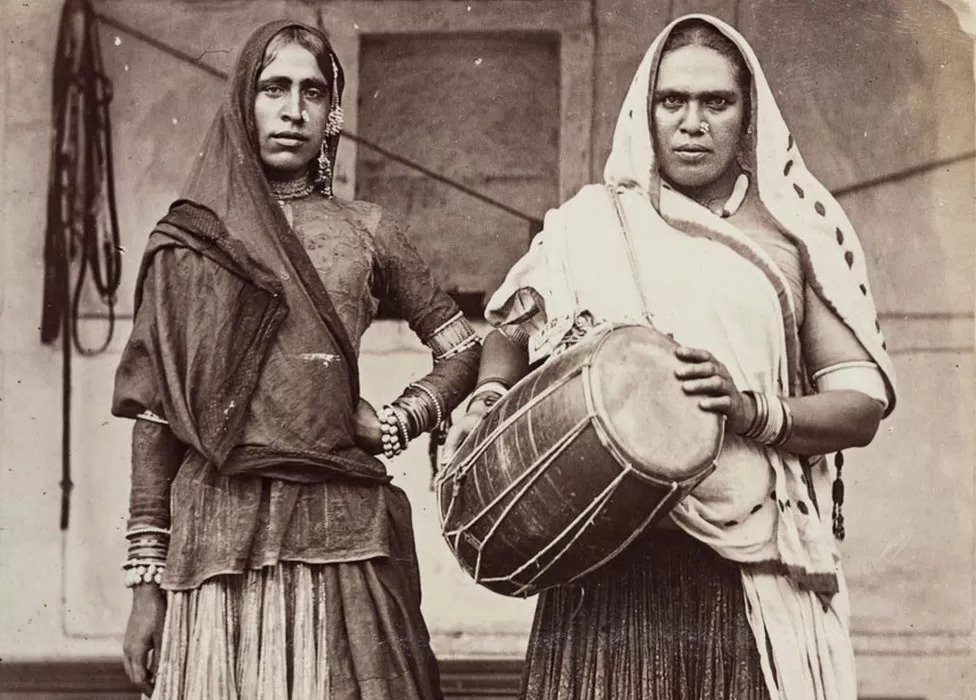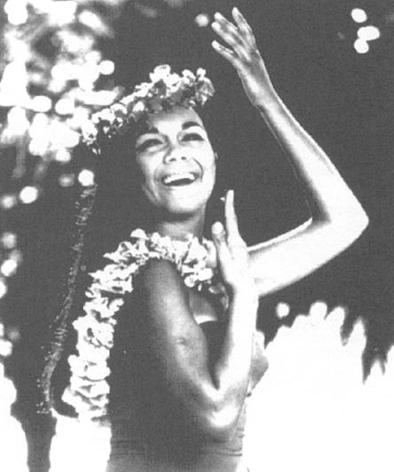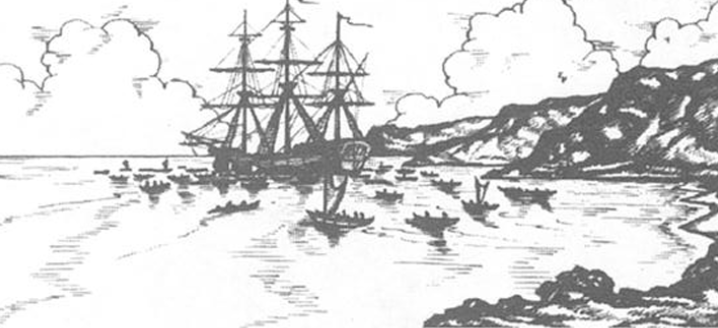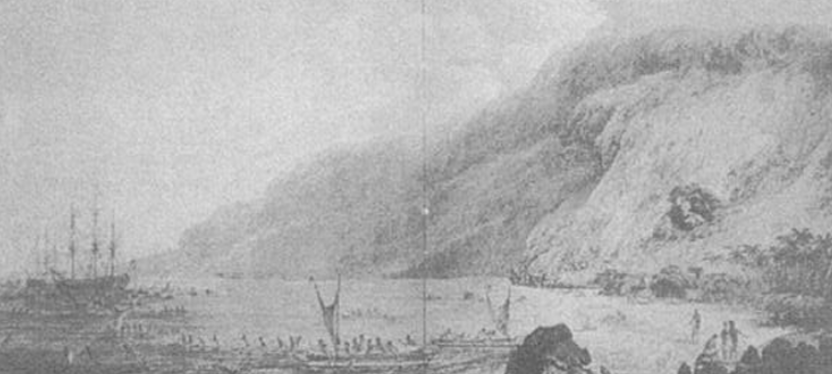By Newton Wainscott

Note
When discussing gender identity and transgender issues contemporarily, it is crucial to note that many of the discussed pre and postcolonial identities considered here do not fall neatly within modern Western conceptions of what it means to be transgender. While I will be using the terms ‘transgender’ and ‘gender identity’ within this essay, the purpose is to make these concepts both brief and easily comprehensible to those unfamiliar with more detailed verbiage, not to retrofit these cultural identities into the more cut and dry terms typically used in the present. ‘Trans’, as used within this essay, stands to mean any individual who does not wholly identify with their assigned gender at birth (oft referred to as biological sex, which will not be used here due to the term’s various conceptual shortcomings).
Introduction
In contemporary society, particularly within the past few decades, there exists a seemingly paradoxical phenomenon where both landmark transgender protections and general transphobic actions have simultaneously increased, with both sides of this conflict being perpetuated by the state. This essay seeks to consider how this directly results from the legacies of colonial ideology transitioning into the present-day politics of state transgender recognition, drawing evidence primarily from the areas of Pakistan, India, and Iran. By examining contemporary steps towards transgender rights in these areas, it becomes clear that many of these state-administered actions (and inactions) echo Western ideology that was transferred to these areas during the colonial period. This case study provides a more concrete way of understanding Ann Stoler’s broader conceptual points about colonial entailments, specifically in that contemporary trans politics act as “refashioned… opaque and oblique reworkings” (Stoler 2016: 5) of prior colonial views of gender recognition. The state continues its coloniality when dealing with transgender people in a frantic attempt to rationalize, define, and categorize those who threaten and lie outside of the invisible lines of government recognition.
Histories and Contempo-realities
Many Westerners, when discussing present transgender issues in areas like Asia and the Middle East, assume that these areas are hostile to and entirely unsafe for transgender individuals. Despite this pervasive idea, it is important to note that Iran, India, and Pakistan often have more progressive legislation than many places in the United States. To understand why this misconception is so common, the colonial past must be examined and understood. Before diving into the impacts of direct colonialism, Iran must be discussed regarding Western proximity and interaction. Often, Muslim countries carry a stigma that labels Islamic areas and practitioners as homo and transphobic. However, during the Qajar dynasty in Iran, the gender binary was completely nonexistent, only coming into play through the nation’s eventual relationship with the West. In past Persian literature, homosexuality was often written about and accepted, so long as one was performing their outward religious duties. “What changed gender construction and desire in Iran,” Gichki writes, “was the Westernization of the society.” Iran shifted into a “European nation-state” (Gichki 2020: 34), quickly passing various regulations outlawing homosexual behavior and other ‘socially unacceptable’ actions – the supposedly homo- and transphobic Islamic state was almost entirely created from colonial constructions of morality rather than the tenants of Islam, as many Westerners who fall into a commonly-held ethnocentric misconception believe.
In Pakistan and India, colonialism operated in a significantly more direct fashion regarding an established instance of nonbinary or “third gender” groups. Hijras (referred to as Khawaja Saras in Pakistan), are a Hindu group typically comprised of intersex and transgender people concentrated primarily in South Asia and have existed for around two thousand years. Hijras have been historically recognized and accepted, a fact particularly documented during the Mughal Empire, and around three million Hijras exist in India today (Harvard 2018). Hijra culture involves a unique guru-chela kinship system, where the Guru acts as a parental figure towards a younger Hijra, referred to as the chela. Contemporarily, the Guru is expected to provide food, shelter, and guidance to the chela, who often begs on the street and shares the profit with their teacher. In some instances, Hijras can also receive income by performing at bhadhais – “auspicious occasion[s] like childbirth or marriage” (Gichki 2020: 32) – but are almost completely excluded from the broader job market and many other facets of public life due to their gender identity.
One might question how Hijras transitioned from being highly respected members of Hindu society capable of attaining prominent positions of authority to being scorned by the same members of the community that once revered them. The legal beginning of this cultural transition begins with Part 11 of the Criminal Tribes Act (CTA) of 1871, when Britain was still in direct control of India and what would become Pakistan. This act attempted to ban the presence and public existence of Hijras, “prohibit[ing]… being seen from a public street or place – while performing or wearing women’s clothes” (Gichki 2020: 34). It is important to note that as opposed to the moral concerns driving social change in Iran, Britain passed this act because “gender and gender behaviors were germane to [direct] colonial control, in which Hijras were considered as ungovernable” (Gichki 2020: 34). To draw a brief parallel, this almost two-hundred-year-old bill closely mirrors contemporary articles being proposed across the United States. A recent Tennessee bill, successfully passed in early March of 2023, states that “male or female impersonators” are no longer allowed to “engage in adult cabaret performance[s]” on public property or in the presence of minors (Restrepo 2023). The parallels between these two laws could not be more evident – states have a continuous vested interest in controlling narratives of gender where the interest exists due to the legacies of classical Western thought and thus colonialism. The persistent concept of ‘ungovernable’ bodies and subgroups represents what Ann Stoler calls “colonial entailments,” or continuities that “may lose their visible and indefinable presence in the vocabulary… of current concerns” (Stoler 2016: 4). While in many respects, transgender people have generally become more accepted in the present as members of society and citizens, the various anti-trans bills floating around in the United States (and globally) prove that many of these colonial ways of thinking are still insidiously present. The colonial entailment of the ‘ungovernable body’ will be elaborated on in the next section, particularly regarding the “assertation that the present is the site of colonial practices… and that some populations are still subject to instantiations of those practices” (Stoler 2016: 25).
Continuity and ‘Change’
In present day Iran and postcolonial Pakistan and India, state interest has mostly shifted from condemnation into a form of legislation portrayed as beneficial to the communities it legislates, which is occasionally the case. In 2018, Pakistan passed an act allowing for the recognition of five different types of identity expression, paying homage to South Asian perceptions of gender. Yet, Pakistan’s act simultaneously has an entire section discouraging begging practices; Gichki states that “this aims specifically at the [aforementioned] guru-chela kinship practice” (2020: 32) that is key to Hijra culture. The act also provides no relief for the income disparity and job discrimination this subculture must deal with as a result. Also, the five gender options outlined by the act, while more progressive and culture-bound than similar moves seen in the United States, are not clearly defined, rendering individuals unable to understand how to define themselves according to the state. What does it matter if one is recognized if this recognition continuously leads to a culture of exclusion through “new forms of categorizations and gender subordination” (Gichki 2020: 32)? The state, while still paying some cultural homage to the complexity of gender identity in South Asia, seeks to create “‘normal narrative[s]’ of… ‘non-normal identity’” (Draz 2017: 373) in order to ‘know/understand’ its citizens. There exists an extremely colonial, pervasive idea that trans individuals, hijras, or anyone experiencing a disidentification with their assigned gender at birth (AGAB) can be who they are, so long as we, the state, can recognize you according to our arbitrary categorizations. This idea of the ‘normal narrative’ goes directly back to the fight against the ‘ungovernable’ and ‘criminal’ body as outlined by the CTA of 1871; Pakistan’s act thus continues this conflict whilst simultaneously rewriting transgender and Hijra history, as if these forms of subjugation have not occurred before – albeit in different forms than one may expect. Stoler further explains this concept of disidentification with the past, stating that “not recognizing these colonial genealogies… may have as much to do with what the connectivities between past and present are expected to look like” (2016: 6). As such, one with little or no familiarity with past struggles of gender identity may easily overlook the darker sides of legislation oft portrayed as beneficial to the community. Even transgender people in the West, though familiar with their own struggle, are unable to recognize and/or identify with these continuous colonial entailments – “those who are privileged by the current arrangement [of gender recognition/classification] do not have to question whether the state is “getting them right” or the processes through which that rightness is secured” (Draz 2017: 376).
To carry these ideas over to India, an act was passed in 2019 that was explicitly focused on eliminating various forms of discrimination socially and in the workplace. Despite the positives, this bill has also fallen short in terms of appropriate problem-solving, recognition, and representation. India’s act specifically targets the monetary discrimination that goes unaccounted for in Pakistan, but still does nothing to change the material reality of their Hijra population. In fact, the terms ‘Hijra’ and ‘transgender’ are used interchangeably, which disregards the idea that the term Hijra “does not only encompass a gender identity, but is associated with particular traditions, linguistic and religious practices” (Gichki 2020: 32) that the word ‘transgender’ is unable to aptly describe. Significantly, the bill also promises appropriate gender recognition without requiring surgery, yet anyone applying to change their gender on their identification must have a physical examination conducted prior to this change. Not only is this contradictory to the wording of the bill, but it also forces transgender individuals to medically transition – the exams exist for the sole purpose of state recognition, relying entirely on the power and knowledge of the state to decide whether one’s body abides by the arbitrary rules and societal standards that the state itself imposes. The state must first recognize the body to further their categorization of the individual as one, the other, or the other other and so on. Stoler writes that colonial histories and present entailments place significant emphasis on distinguishing the “us from a distant them” in space and in time (2016: 25); in this case the ‘them’ exists as a difficult to recognize and thus threatening ‘other’.
To further develop Stoler’s thought and how it relates to these required medical exams to receive recognition, a brief discussion of the interplay between time and desire becomes necessary. Draz, when discussing medical transition and the process by which to receive it, asks a striking and important question: “Does realness reside in the length of time a desire exists?” (Draz 2017: 374). The ‘born this way’ narrative that modern states utilize to classify transgender individuals, Hijras, or any other anomalous group says yes – there exists this concrete connection between realness, or legitimacy, and time that must be adhered to if one aims for official recognition. This narrative relies on this temporality being entirely linear, as a process that transitions smoothly between long-term recognition of one’s ‘transness’ into non-surgical forms of treatment (hormones, social transition, etc.), then into surgical forms of treatment, mandated examination, and finally culminating in a changing ID marker or name. Therefore, traditional and pre-colonial identities are not just subjected to historical oversight but are also forced into participation in the erasure and replacement of their histories (through required medical transition and the disregard for how these histories impact their identities) to achieve state recognition and protection.
The ‘born this way’ narrative can also be recognized and analyzed in Iran, despite the lack of direct colonialism that occurred in the country. Still, the omnipresent influence of this manner of Western thought exchange rears its head in a similar fashion. Iran exists as an exceptional Islamic nation in that transgender people are widely accepted and excepted to medically transition, having the second highest global rate of transition surgeries (Gichki 2020: 33). However, this current societal acceptance does not stem from the same intentions held in pre-Westernized Iraq, originating instead from a collective cultural idea of the “sick transsexual” (Gichki 2020: 33) rather than a genuine state and public validation – both reiterating the idea of being ‘born this way’ whilst simultaneously painting gender variance as illness. As in India, medical transition (encompassing surgical and non-surgical transition) in Iraq requires “a series of bureaucratic process[es] in order to be certified as ‘official’ transgender” (Gichki 2020: 33). In Iraq, this certification is crucial due to the strict gender segregation that makes up much of public life. Due to the physical separation of male and female identities, this also leaves little room for those with nonbinary and ‘third-gender’ identities to exist.
This medicalized idea of what it means to disidentify with one’s birth gender opposes precolonial ideas found in genderless 19th century Iraq as well as historical third-gender options in Pakistan and India, only serving to further the contemporary ‘post’-colonial state’s continuous need to organize, classify, and control by bringing colonial entailments into the present. While some may wish to physically or medically transition, and this should be promoted and made an open option to any of the aforementioned groups, the forceful methods employed currently are both invasive and contrary to the pre-colonial origins of culturally bound ideas of gender, like Hijras. The ‘born this way’ narrative that underlies present state moves of categorization and recognition is one that engages directly with the impacts of the colonial and Westernized past and the criminalization of colonized bodies, allowing internalized colonial conceptions of gender to continue.
Conclusion
Gender identity and transness exist as some of the most contentious points in the modern political sphere yet are rarely observed by the wider public as extensions of a colonial past. The spread of the idea that colonial entailments continue to permeate every sphere of current life is threatening to many, particularly those who have a vested interest in preserving the ‘status quo.’ While this essay points out many of the major colonial flaws in postcolonial states’ approach towards transgender rights, recognition, and agency, this is only a minute segment of the vast number of colonial entailments that continue to impact transness and a right to gender identification globally, from former colonizers to the formerly colonized. As such, there exists no one solution – to generalize would be to fall into the same fatuous misconceptions that plague and guide trans politics today. Instead, a method that can lead to true trans agency and liberation involves a look inward, to understand how all members of society participate willingly or otherwise in these processes of state classification. The aforementioned implications of the division between ‘us’ and ‘them’ in the context of gender identity clearly play out through dynamics that move further than transness, particularly as seen in the dichotomies between the colonizer and colonized, and the implications that has regarding white and nonwhite populations (Draz 2017: 380). True individual agency is necessary, but most importantly, a form of radical self-recognition and the local, decolonial forces contributing to said identification is necessary as well. By creating collective solutions to issues of identity in our own communities, we can begin to work towards curing the wound created by “duress as a form of power…slash[ing] a scar across a social fabric” (Stoler 2016: 8).
Bibliography
Draz, Marie. 2017. “Born This Way? Time and the Coloniality of Gender.” The Journal of Speculative Philosophy 31, no. 3: 372-384. https://doi.org/10.5325/jspecphil.31.3.0372
Gichki, Mahso. 2020. “Deconstructing Transgender Identities in Pakistan, India, and Iran in Colonial and Post-colonial Context.” Development 63: 31-37. https://doi.org/10.1057/s41301-020-00243-3.
Restrepo, Manuela López. 2023. “The anti-drag bills sweeping the U.S. are straight from history’s playbook.” NPR, March 6, 2023. https://www.npr.org/2023/03/06/1161452175/anti-drag-show-bill-tennessee-trans-rights-minor-care-anti-lgbtq-laws
Harvard University. 2018. Religion and Public Life at Harvard Divinity School. n.d.“The Third Gender and Hijras.” https://rpl.hds.harvard.edu/religion-context/case-studies/gender/third-gender-and-hijras.
Stoler, Ann Laura. 2016. Duress: Imperial Durabilities in Our Times. Durham: Duke University Press.
IMAGE: Biswas, Soutik. “How Britain Tried to ‘Erase’ India’s Third Gender.” BBC News. BBC, May 31, 2019. https://www.bbc.com/news/world-asia-india-48442934.



